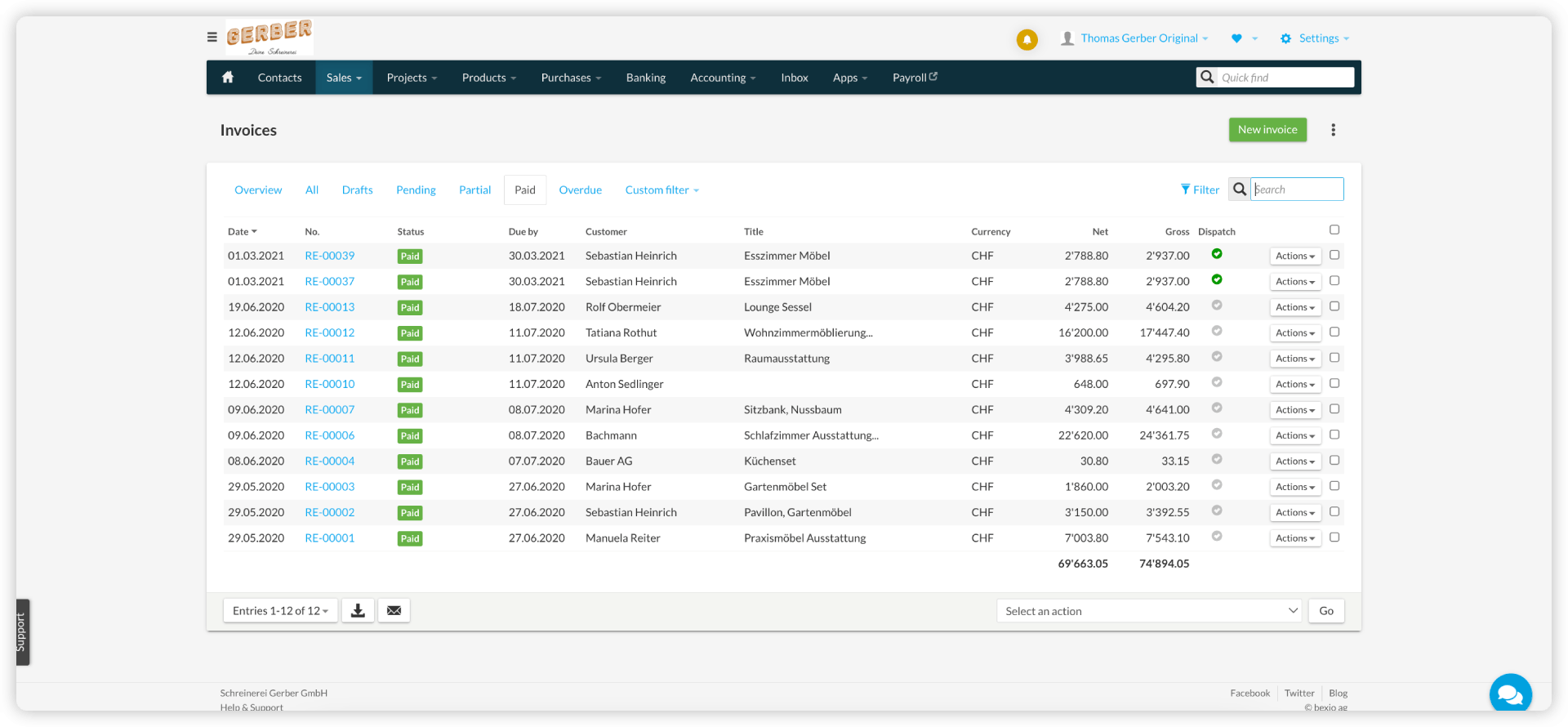How successful your company is will also be reflected in how professionally you deal with your debtors. This article explains what debtors are and how debtor accounting helps you to determine open invoices and late payers as well as monitor liquidity.

What are debtors?
Debtors are liable parties who have to settle their open invoices. From this point of view, every customer with an open invoice is a debtor, because they owe you money for services rendered. This does not include invoices paid in cash or in advance.
What is the difference between debtors and creditors?
Creditors, also called suppliers or vendors, provide you with services that you have to pay for (liabilities). In contrast, debtors are liable parties who owe you money for services you have rendered (receivables).

What is debtor accounting?
Debtor accounting is part of a company's financial accounting and is part of receivables management. Debtor accounting is also referred to as accounts receivable accounting, or as a sub-ledger or auxiliary ledger. It shows which invoices your customers have not yet paid for services or deliveries. Aside from this, it also manages credit memos.
What are the advantages of debtor accounting?
In principle, debtor accounting is optional. However, if your company is obliged to carry out double-entry accounting (e.g., is an AG or GmbH), this includes maintaining debtor accounting, so-called auxiliary accounting.
With debtor accounting, you can monitor receivables and incoming payments as well as send targeted payment reminders and dunning letters. It also provides information about the willingness to pay, solvency or reliability of customers.
What is a debtor account?
Some customers order something ten times a year, others every three weeks or only once. It is nevertheless advisable to create a separate debtor account for each one of your customers. This way, you can see which deliveries or services have not yet been paid for by whom.
Reasons for debtor management in your SME
Debtor management, including receivables management, helps you keep track of outstanding invoices. If invoices are not paid, this will have an impact on your liquidity. The more effectively you monitor open invoices in the company, the more likely you are to secure liquidity – liquidity bottlenecks are still one of the most common reasons why companies fail.
How debtor management protects your liquidity
Whether you manufacture tools, install roller blinds or offer coaching, if your products or services are not paid or are paid late, it is more than annoying for you. Unpaid invoices must be written off in your financial accounting despite dunning letters, so that your profit does not decrease and your numbers are correct.
Not every customer who pays late is a black sheep. However, even if a customer is very likely to pay, any delay in payment will have a negative effect on your liquidity: short-term funds become scarcer, your ability to act is limited and planning investments becomes more difficult.
If you continuously check your incoming payments, you can react faster to your customers' payment behaviour and better distinguish the black sheep from the white ones. In the worst case, you will no longer supply customers who do not pay.
Debtor management saves you time, money and frustration
Notes that have not yet been paid by the customer quickly lead to chaos, and unpaid invoices get forgotten. The problem then is that your accounting is no longer correct. This is because every product or service you deliver triggers an invoice, and the amount is posted in your accounting. In order for this posting to be balanced and for you to be able to account for the actual profit, your accounting needs the payment from the debtor. If the payment is not then made within the set deadline, you must send dunning letters or, in the worst case, initiate debt collection.
With a cleanly managed debtor management system, no more open invoices get lost, and you always have an eye on when it is time to send your customer a reminder. This saves you valuable time, which you can invest in your business or in customer relationships, as well as money and, above all, frustration.

If even dunning letters do not induce the customer to pay their debt, it is worth passing on the claim to third parties: you have the option of initiating debt collection, or you sell the claim to an external factoring company. This company purchases the liability, with or without taking over the default risk, and collects the outstanding amount for its own account. This means that your company does not risk default of payment, you increase your liquidity, and your accounting is balanced.
Information is the key to successful debtor management
The larger your company is, the more people are responsible for different tasks. Good debtor management therefore requires good information management. This includes ensuring that the employees who are responsible for shipping goods and issuing invoices have the same information as the employees who take care of accounting.
If the person in question is in the know, better strategic decisions can be made for the business. For example, a customer's past payment history can be crucial – if payments are repeatedly delayed or not made, you should think, for instance, about stopping deliveries or terminating the business relationship.
With bexio, you have a grip on all debtors
An accounting software like bexio also gives your company an overview of paid and open invoices. Payment reminders or dunning letters can be sent automatically . This noticeably increases your payment rate. Try bexio now for free!
Frequently asked questions about debtors
A customer orders goods worth CHF 200.00 from you. As long as the invoice is not paid, this CHF 200.00 will be on the debit side in your accounts. You note this debt on the customer's debtor account.
Your unpaid invoices from suppliers, on the other hand, are on the credit side of your accounts. The delivery of new goods has increased the value of your company, while no money has yet been paid out.
Since debtors are those who owe money to a company, the list of debtors includes all open invoices, or receivables from all customers.
In debtor accounting, a separate debtor account is created for each customer, with a separate number, which can be used to identify the customer. This way, the company assigns its receivables to specific debtors and is aware of the open invoices.
Suppose a customer has paid for the ordered product but noticed damage after delivery. After they have complained, the company issues a credit memo for them. This makes them a debtor with a credit balance, to whom the company owes money. This negative amount is not recorded under "trade receivables", but under "other liabilities".
If a customer does not settle their debt despite payment reminders, dunning letters and debt collection, and despite a formal objection or negotiation in court, this is referred to as a bad debt loss. This must be written off in your accounting.
The debtors turnover provides information on how often the outstanding sums of debtors affect total revenue. The higher the number, the better: the faster invoices are settled, the better the customer's paying habits and the better your own receivables management.
The debtors turnover is calculated as follows: sales revenue divided by the average stock of debtors. Example: Revenue of 200,000/debtor stock of 18,000 = debtors turnover of 11. A good debtors turnover should not fall below the values of 8–10.
How long does it take on average for customers to settle open invoices? This is shown by day sales outstanding. This makes it an important indicator for liquidity management. The longer the day sales outstanding, the longer the company has to wait for payment to be received, which reduces its liquidity.
Test out bexio now for 30 days free of charge and with no obligation
Test all the features of bexio, the simple business software for your SME administration.





